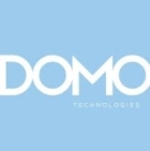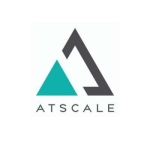It is true that there are often challenges when upgrading between releases of BusinessObjects but this has always been the case as it has been for all the other BI and software application vendors too.
A few rules of thumb for BusinessObjects software are:
1. Never upgrade to an x.0 release - always wait for at least the x.1 release and even the first or second service pack of that release
2. Never attempt to perform a release upgrade if you have not done one before. Get training and experience first or use a reputable BO Consulting company
3. Experiment with the new release on a sandbox environment to become familiar with the changes and find any major issues before attempting a migration to production
Once you are stable on a BusinessObjects release, it is worth staying there for a while.
Update April 2014 : BusinessObjects BI 4.1 has been out for 8 months now and is looking like a stable release. Expect to see a lot of activity moving to this release over the next year.
Update September 2014 : BI 4.1 is now at Service Pack 4 (SP4) which corrected multiple issues in earlier service packs (SP2 and SP3). As more customers move to BI 4.1. more experience is gained and the platform improves. Main features attracting customers to BI 4.1 are improvements in Web Intelligence, Mobile Dashboard support and support of Desktop Intelligence.
Update February 2015 : BI 4.1 is now at Service Pack 6 (SP6). Both SP5 and 6 have been stable. Most BI 4.0 customers are also migrating to BI 4.1 and many more XI 3.1 customers are also migrating since XI 3.1 goes into a maintenance only support mode ( no more service packs or fix packs) after Dec. 31, 2015. The next major release BI 4.2 is currently scheduled for end of the year.
Update December 2015 : BI 4.1 SP7 has just been released. BI 4.2 is in Customer User Validation phase and will not be released until 2016. The jury is still out regarding if the quality of software updates has improved but new QA processes have been implemented by the SAP BusinessObjects development and support teams this year.
Update May 2016 : BI 4.2 SP2 was released at the end of March. There are quite a few new features including to the Upgrade Management Tool (UMT) which is used for migrating content from previous releases. It is now possible to handle incremental updates and moving certain types of content instead of all. There is also a new mechanism that allows part of the update to be performed while the system is still running. There is also a new Recycle bin feature for public folders in case you accidently delete a report. Organizations still running BusinessObjects XI 3.1 are now looking to go straight to BI 4.2.
Update October 2016 : BI 4.2 SP03 is now the latest version released at end of August. It has a lot of new features for a service pack including additional new functionality for Web Intelligence like cascading prompts for input controls, references and further enhancements to the new discussions. The Administrators cockpit has also been further enhanced to provide more options. So far, stability looks good.
Update April 2017 : SP03 has proven to be a relatively stable service pack that many BO customers have updated to. The next service pack, SP04 is now in beta and scheduled to be released in May. Again, it promises to have a bunch of new functionality for Web Intelligence including full parity between the Java and dhtml clients, an optional new UI and many new graphics
Update September 2017 : SP04 has now been available since May and there were additional quite a few code changes . The first release release had multiple issues. Some were addressed in the two subsequent Fix Packs that have been released. The general feeling was that it was not as stable as SP03. However SP04 was the first version that included SQL Server 2016 support so many customers wanted to install it.
Update February 2018 : SP05 was released in December and there were further enhancements particularly to the new optional HTML5 Fiori portal that can now be used for consuming BO reports. This first version has some issues around installation/upgrade but too early to judge its overall stability yet.
Update July 2018 : Like all the previous BI 4.2 Service Packs, SP05 had multiple issues when first released and really did not completely stabilize until Fix Pack 200 (after Fix Pack 100). It is now at Fix Pack 400 and SP06 is in beta testing and should be released soon.
Update December 2018 : SP06 is now the current BI 4.2 Service Pack update released late July. Like all the other service packs there were some initial issues and after a couple of fix pack updates, it now is quite stable. Like its predecessors it has a lot of additional functionality especially with the new Fiori HTML5 UI and Web Intelligence (more new charts like funnels, pyramids, intra-document links and more). Nice enhancements to BO Administrators Cockpit for usage/performance monitoring. Now BI 4.3 has been announced for release at end of 2019, the next service packs may be more maintenance fixes than new functionality.
Update June 2019 : SP07 was released a couple of months ago. Unlike previous BI 4.2 Service Packs this had a very small amount of new functionality and was mainly a maintenance update. Again the first version had a few issues but a fix pack has been released and customers are upgrading to it. The remaining 4.2 service packs are also supposed to be primarily maintenance updates and fixes as new functionality will be focused in the eagerly awaited BI 4.3 release now likely to be released in early 2020.
Update December 2019 : BI 4.2 SP07 remains the current release. There have been issues with some of the Fix Packs and it is best to go with the most current. The BI 4.3 open beta is due to start this month but GA is not expected until mid 2020 now. There should also be an SP08 update to BI 4.2 coming in early 2020.
Update April 2020 : BI 4.2 SP08 was released a few weeks back and despite it being primarily a maintenance release, SAP has included some interesting new features like a direct connector to Snowflake for Webi. Some early bugs in SP08 have been reported and the first fix patch 100 has just been released. There is still much anticipation for BI 4.3, the next major release due out this Summer.
Update September 2020 : BI 4.3 SP0 was released in June and has a radically different HTML6 UI that will take some getting use to. There are a lot of other new features including Webi as a data source allowing you to use universes on top of a Webi report. a few brave souls may try out an SP0 release but most will wait till at least SP2 due out mid 2021. BI 4.2 will continue as the dominant release for at least the next couple of years with SP9 coming out later this year.
Update September 2022 : BI 4.3 SP02 is now the current release with SP03 due for release in December. BusinessObjects BI 4.2 will go into Priority 1 support mode for 2 years starting Jan 1, 2023. In addition, SAP has announced the next major release after BI 4.3 which has been code-named BI 2024 and is die for release at end of 2024/beginning of 2025. This release like all previous BI 4 releases will run both on-premise and in the cloud. This effectively means the BusinessObjects roadmap is solid for at least the next 10 years which is a testimony to both the popularity and success of the product.
Update March 2024 : BI 4.3 SP04 is now the current release but since it has only been out a couple of months, not too many people are moving it to it yet. SP03 is now at patch level 900 and there have been some issues over the last year. Again, a lot of new functionality (and therefore new code) was delivered with both SP03 and SP04. The most significant was the new Data Tab mode in Web Intelligence which allows merging and transformation of data sources. You can join sources toigether with Left Join, Inner Join, Outer Join and Append. You can also profile your data and see disticts and nulls and apply simple transforms using a Replace option.
Update September 2025 : The next major BusinessObjects release, BI 2025, was released in March 2025 and continues with new innovations including new UI5 dashboard components and the ability to create offline reports/dashboards for no additional license fees. There are also some super cool features with Tool Tips allowing drill down and report viewing in a tool tip and haveing a tool tip within a tool tip. Further additions to Data Tab mode allowing creation of Variables, Access to a Formula Editor and new joins (Right Join and Right Join without intersection). BusinessObjects just keeps getting better and better!
Disclosure: My company has a business relationship with this vendor other than being a customer. My company is a SAP BO partner - http://www.infosol.com/about/partners/


















The Free hand SQL is a none issue ,there are even better dynamic solutions for implementing free hand SQL with edit abilities even in Web intelligence 3.1